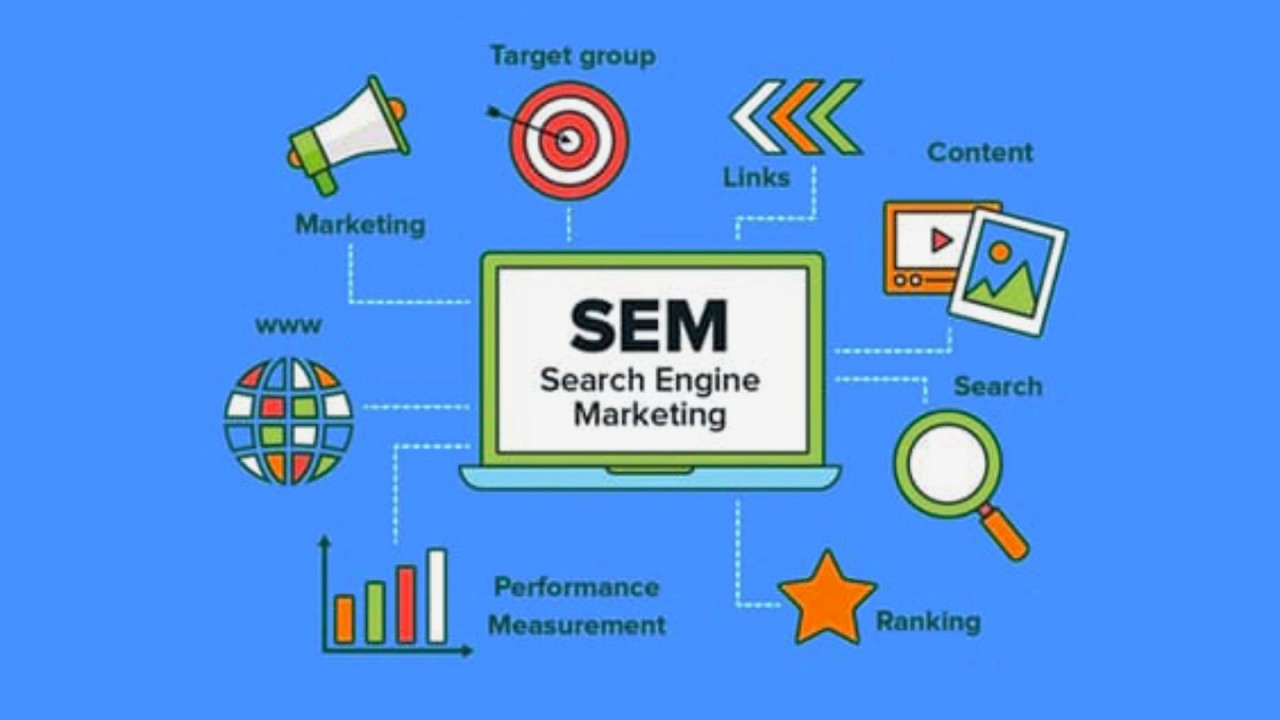In the digital realm, Search Engine Marketing (SEM) stands out as a powerful tool for businesses aiming to enhance their online presence, drive targeted traffic, and achieve marketing objectives. SEM operates on the premise of paid advertising, allowing businesses to display ads prominently on search engine results pages (SERPs) to users actively searching for relevant information, products, or services. This comprehensive article delves into the intricacies of SEM, unraveling how it works, its key components, and its strategic implications for businesses seeking to leverage the power of digital marketing.
Understanding the Basics of SEM
At its core, SEM is a form of online advertising that enables businesses to promote their offerings by bidding on relevant keywords and displaying ads on search engine platforms such as Google Ads and Bing Ads. SEM encompasses various tactics, including pay-per-click (PPC) advertising, keyword targeting, ad positioning, and performance tracking, with the primary goal of driving targeted traffic and generating leads or conversions.
Key Components of SEM:
- Keyword Research: SEM begins with extensive keyword research to identify relevant search terms and phrases that align with the business’s offerings and target audience’s search intent. Keywords are selected based on factors such as search volume, competition, and relevance.
- Ad Creation: Once keywords are identified, businesses create compelling and relevant ads tailored to specific keywords and target audience demographics. Ads typically consist of headlines, descriptions, and display URLs designed to attract clicks and drive traffic to the business’s website or landing page.
- Bid Management: SEM involves bidding on keywords in online auctions, where advertisers compete for ad placement on SERPs. Advertisers set bids based on the maximum amount they are willing to pay for each click on their ads, with higher bids typically resulting in better ad positioning.
- Ad Auction: When a user enters a search query relevant to the advertiser’s chosen keywords, search engines like Google and Bing conduct real-time auctions to determine which ads will be displayed on the SERP and in what order. Ad position is determined by a combination of bid amount, ad quality, and relevance.
- Ad Ranking: Search engines use algorithms to evaluate ad quality and relevance based on factors such as click-through rate (CTR), ad relevance, landing page experience, and ad extensions. Ads with higher quality scores are more likely to appear in top positions on SERPs.
The Role of Ad Extensions
In addition to standard text ads, SEM allows businesses to enhance their ads with ad extensions, which provide additional information and functionality to users. Ad extensions can include features such as site links, call extensions, location extensions, and structured snippets, enhancing the visibility and relevance of ads and improving the user experience.
Tracking and Optimization
A crucial aspect of SEM is ongoing tracking and optimization to maximize the effectiveness of advertising campaigns. SEM platforms provide robust analytics tools for measuring key performance metrics such as impressions, clicks, CTR, conversion rates, and return on investment (ROI). Advertisers use these insights to refine keyword targeting, adjust bidding strategies, optimize ad copy, and improve landing page experience for better campaign performance.
Strategic Implications of SEM
SEM offers businesses several strategic advantages, including:
- Immediate Visibility: SEM provides immediate visibility on SERPs, allowing businesses to reach users at the moment they express interest in relevant products or services.
- Precise Targeting: SEM enables precise targeting based on factors such as keywords, location, device, and demographics, ensuring ads reach the most relevant audience segments.
- Measurable Results: SEM offers detailed performance tracking and analytics, allowing businesses to measure the effectiveness of advertising campaigns and optimize strategies for maximum impact.
- Flexible Budgeting: SEM platforms offer flexible budgeting options, allowing businesses to set daily or campaign budgets and adjust bids based on performance and objectives.
Conclusion: Leveraging the Power of SEM
In conclusion, SEM is a dynamic and versatile digital marketing strategy that empowers businesses to increase online visibility, drive targeted traffic, and achieve marketing objectives. By understanding the key components of SEM, tracking performance metrics, and optimizing strategies for maximum effectiveness, businesses can harness the power of SEM to reach their target audience, drive conversions, and grow their online presence in the competitive digital landscape.
